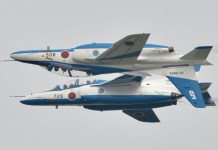According to the information published by the Israeli Ministry of Defense, the United States has received the second battery of the Iron Dome air defense systems from Israel, in accordance with a deal signed by the two countries.
The US had signed a deal in September last year for the procurement of two Iron Dome batteries for evaluation and subsequent deployment to defend its critical installations from aerial threats under the name Iron Dome Defense System Batteries (IDDS-A).
The systems delivered are specifically tailor-made according to the American requirements. The first battery was delivered back in September last year.
“I am confident that the system will assist the US Army in protecting American troops from ballistic and airborne threats as well as from developing threats in the areas where US troops are deployed on various missions,” Defense Minister Benny Gantz said in a statement.
The Iron Dome is a mobile all-weather air defense system co-developed by the Israeli companies Rafael and IAI and is a part of a multi-layered Israeli air defense system which includes Arrow missiles, Iron Beam, Barak-8 and David’s Sling.
While the ‘layers’ are being developed, the Iron Dome practically serves as the country’s primary air defense system.
The system is designed to intercept and destroy short-range rockets and even artillery shells fired from distances of 4 kilometers to 70 kilometers away and whose trajectory would take them to an Israeli populated area.
Much like other systems, Iron Dome also features three primary units; a detection radar, battlefield management & fire control system, and missile-firing units.
However, contrary to a conventional system where all these three systems are placed together to function as one unit, Iron Dome is built to deploy in a scattered pattern.
Each launcher, containing 20 interceptors, is independently deployed and operated remotely via a secure wireless connection. Reportedly, each Iron Dome battery is capable of protecting an urban area of approximately 150 square kilometers.
Iron Dome went from the drawing board to combat readiness within less than four years, a remarkably short period of time for a weapons system designed from scratch, according to military experts.
The system is perhaps the most efficient in its category, with intercepting over 85% of the targets against which it was used.
Within a decade of service, Iron Dome has intercepted over 2,400 projectiles, which could have otherwise landed in populated areas and kill hundreds. Israel faces continuous artillery attacks from its troubled borders with Syria and Gaza.
According to The Times of Israel, Rafael announced that it was partnering with the American defense contractor Raytheon to open an Iron Dome production line in the United States, a sign that further US deals were in the offing.




